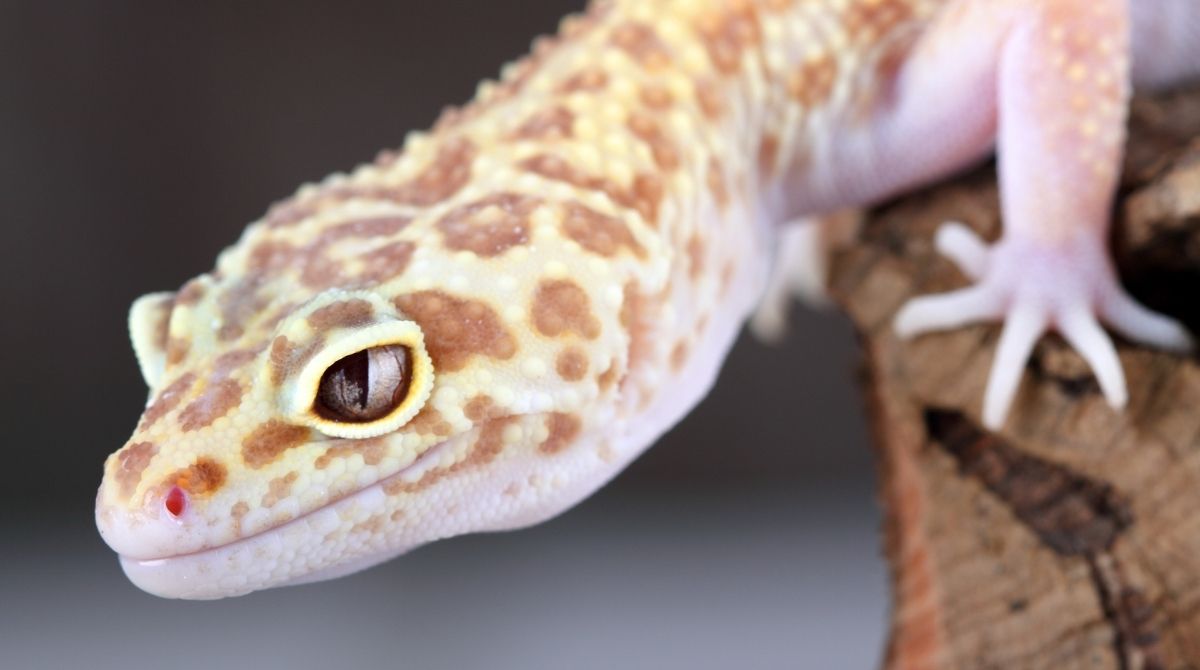Leopard geckos (Eublepharis macularius) are one of the most popular reptile pets, admired for their striking appearance, docile nature, and relatively low maintenance requirements.
However, when it comes to providing optimal care for these fascinating creatures, there are certain considerations that must be taken into account.
One such topic of debate among leopard gecko enthusiasts is whether or not these reptiles require UVB lighting. In this article, we will explore the importance of UVB lighting for leopard geckos and shed light on why it is a vital aspect of their overall health and well-being.
Understanding UVB Lighting:
UVB (ultraviolet B) is a form of ultraviolet light that falls within a specific wavelength range. In their natural habitat, leopard geckos receive adequate UVB exposure from the sun, which helps them synthesize vitamin D3. Vitamin D3 is essential for calcium metabolism and bone health, as it allows these reptiles to absorb and utilize dietary calcium effectively.
The Role of UVB Lighting in Leopard Gecko Health:
- Calcium Metabolism and Bone Health: UVB light stimulates the production of vitamin D3 in the leopard gecko’s skin. Vitamin D3 is then converted to an active form by the liver and kidneys. This active form of vitamin D3 allows the gecko’s body to absorb calcium from its diet efficiently. Calcium is crucial for maintaining strong bones, preventing metabolic bone diseases like metabolic bone disease (MBD), and supporting overall growth and development.
- Proper Growth and Reproduction: Leopard geckos that receive inadequate UVB lighting may suffer from stunted growth and reproductive problems. UVB exposure plays a significant role in regulating hormone levels and reproductive cycles in reptiles. Without proper UVB lighting, females may experience difficulties in laying eggs, and both males and females may face challenges in breeding successfully.
- Behavioral and Psychological Well-being: Providing an environment that closely mimics the gecko’s natural habitat is crucial for their psychological well-being. Exposure to UVB light can influence the gecko’s activity levels, appetite, and overall behavioral patterns. Adequate UVB lighting helps regulate their circadian rhythm, promoting natural behavior and ensuring a healthier and happier leopard gecko.
Selecting the Right UVB Lighting:
When it comes to choosing UVB lighting for leopard geckos, not all options are created equal. Here are a few factors to consider:
- UVB Output: Ensure that the UVB lighting you select emits the appropriate amount of UVB radiation suitable for leopard geckos. Consult with a reputable reptile veterinarian or herpetologist for recommendations on specific UVB bulbs or systems.
- Light Placement and Photoperiod: Leopard geckos are primarily nocturnal, meaning they are most active during the night. It is essential to provide a light cycle that mimics their natural environment. UVB lighting should be placed on a timer, offering a photoperiod of 10-12 hours of light per day, and located in an area where the gecko can bask within a recommended distance from the UVB source.
How much UVB does a Leopard Gecko Need?
Determining the appropriate amount of UVB radiation for leopard geckos can be a bit challenging, as their natural habitat provides a variable range of UVB exposure. However, studies and expert recommendations can help guide us in providing the optimal UVB levels for these reptiles.
- UVB Intensity: The intensity of UVB radiation is typically measured in microwatts per square centimeter (µW/cm²). The recommended UVB intensity for leopard geckos ranges between 15-30 µW/cm². It is crucial to monitor and maintain this range to ensure the gecko’s health.
- Distance and Duration: The distance between the UVB source and the gecko is essential, as it determines the amount of UVB radiation the gecko receives. It is generally recommended to provide a basking spot within 6-8 inches (15-20 cm) of the UVB bulb or fixture. The duration of UVB exposure should be approximately 10-12 hours per day, consistent with their natural day-night cycle.
- UVB Bulb Replacement: UVB bulbs have a limited lifespan, and their UVB output decreases over time. It is crucial to replace the UVB bulbs regularly according to the manufacturer’s recommendations, usually every 6-12 months, even if they continue to emit visible light. This ensures that the gecko receives an adequate UVB dose.
- D3 Supplements: While UVB exposure helps leopard geckos synthesize vitamin D3 naturally, it can be challenging to provide the perfect balance of UVB light in captivity. Therefore, it is advisable to supplement their diet with a reptile-specific calcium supplement that contains vitamin D3. This helps ensure that they receive sufficient vitamin D3 even if UVB exposure is suboptimal.
Remember, the specific UVB requirements may vary based on factors such as the age, health condition, and individual needs of the leopard gecko. Consulting with a reptile veterinarian or herpetologist is highly recommended to determine the most appropriate UVB setup for your gecko and to ensure its UVB needs are being met adequately.
Conclusion:
While leopard geckos can survive without UVB lighting, it is evident that providing UVB exposure is crucial for their long-term health and well-being.
Adequate UVB lighting ensures proper calcium metabolism, supports bone health, aids in growth and reproduction, and contributes to their overall behavioral and psychological wellness.
By replicating their natural habitat as closely as possible, leopard gecko owners can ensure that their reptilian companions lead happy and healthy lives.
Remember to consult with a reptile expert to determine the most appropriate UVB lighting system for your leopard gecko’s specific needs.


